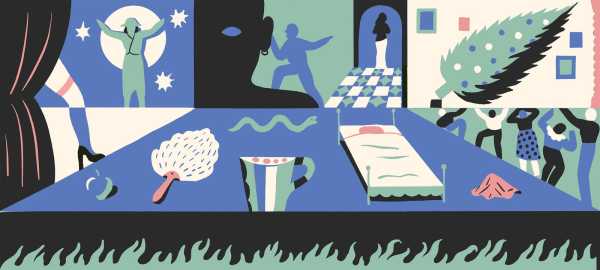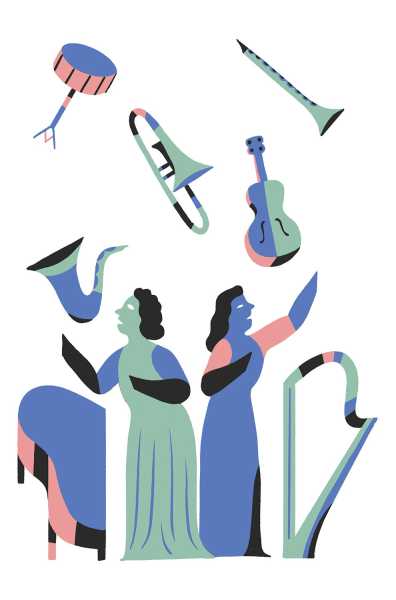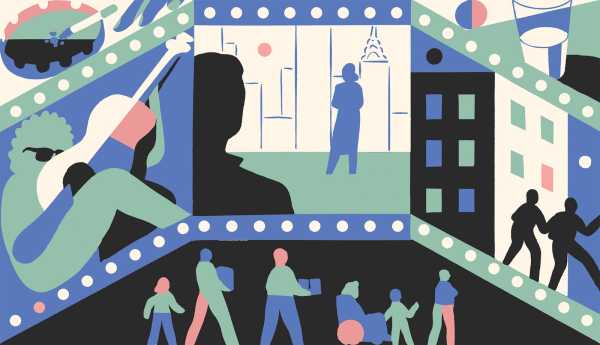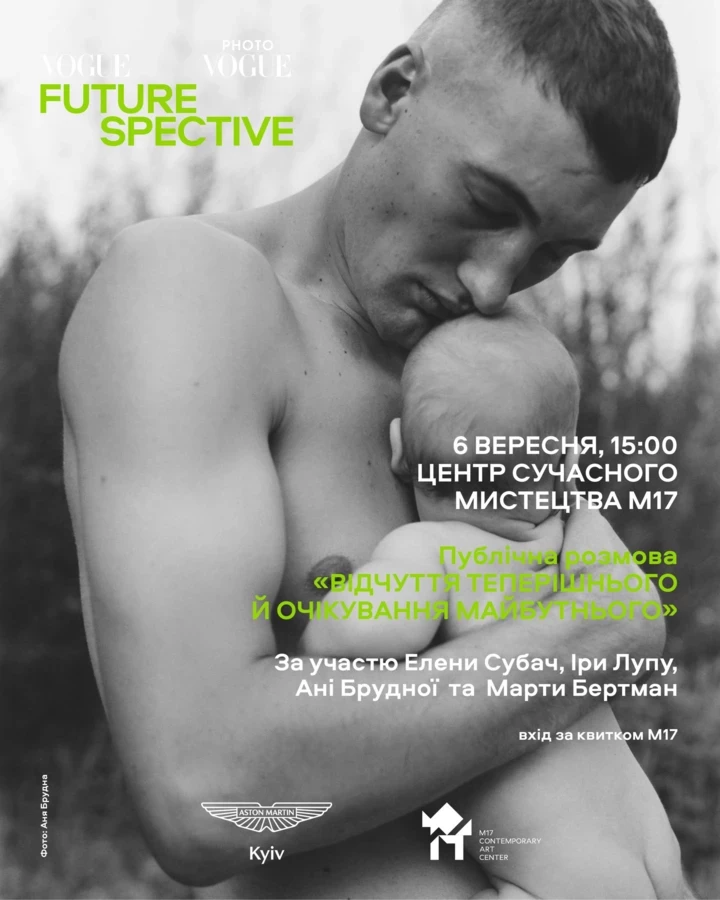
Save this storySave this storySave this storySave this story

Shauna Lyon
Goings On editor
You’re reading the Goings On newsletter, a guide to what we’re watching, listening to, and doing. Sign up to receive it in your in-box.
As the air gets crisp and we head indoors, the cultural horizon brings warmth and sustenance. With the holidays around the corner, we’ll soon have a bounty of “Nutcracker”s, “Messiah”s, and “Christmas Carol”s to behold. We’ll be delivering a full list of the city’s topnotch holiday events in a few weeks. But there’s much else to enjoy this season—from Adrianne Lenker at Kings Theatre and Ghostface Killah at Terminal 5 to Angel Blue at the Metropolitan Opera; from Denzel Washington on Broadway to Gabriel García Márquez on Netflix; from “Nickel Boys” in the cinemas to Camille A. Brown at the Joyce and Caspar David Friedrich at the Met. Your subscription makes it possible for our critics to canvass the cultural landscape and bring you the best shows, films, concerts, exhibitions, and pop-ups in New York City and beyond—thank you for letting Goings On be your guide to the season. Let it snow!
Jump to: Contemporary Music | Theatre | Art| Dance| Classical Music | Television | Movies
Contemporary Music

Illustrations by Julien PostureWu-Tang, Esperanza Spalding, Indie Crooners
The winter concert slate opens with the reunion of one of the great indie-rock acts of the twenty-first century: TV on the Radio, at Webster Hall (Nov. 25-30), which leads a spate of sensational bands. On Nov. 14-15, at the same venue, the easygoing outfit Slow Pulp unwinds its moody sound. The following week, the shoegaze pioneers Slowdive take over Brooklyn Paramount (Nov. 18-19). At Pioneer Works, the post-rock radicals of Godspeed You! Black Emperor début urgent music of protest (Nov. 20-21). For those seeking rock with a more outré appeal, consider Fousheé (Music Hall of Williamsburg; Nov. 26), Toro y Moi (Terminal 5; Feb. 14), or Bartees Strange (Bowery Ballroom; Feb. 19), whose new album, “Horror,” is out on Valentine’s Day.
Rappers from across the city score homecoming shows. On Dec. 6, three of the Wu-Tang Clan’s most revered members, Ghostface Killah, Raekwon, and GZA bum-rush Terminal 5. Another seminal hip-hop group, De La Soul, comes to Lincoln Center on Jan. 17, as part of its pay-what-you-wish program. A night later, the Queens m.c. Elucid stages the punk provocations of his new album, “Revelator,” at Baby’s All Right.
There’s a singer-songwriter for anyone in need of a less boisterous experience. The Big Thief leader Adrianne Lenker stokes the embers of the rustic songs from her recent solo record, “Bright Future,” at Kings Theatre (Nov. 18-19). In a special series of shows, Regina Spektor runs through her 2002 album, “Songs,” at Warsaw (Dec. 8-10). On Jan. 30, the loop artist L’Rain joins Soccer Mommy at Brooklyn Steel while the emergent folk star Joy Oladokun shares her observant music of personal awakening at Irving Plaza. At Radio City Music Hall, the understated R. & B. humorist Faye Webster hits the road for the second time in support of her recent album, “Underdressed at the Symphony” (Feb. 26). As a spiritual palate cleanser, there are plenty of opportunities to catch the jazz visionary Esperanza Spalding during her Blue Note residency, Feb. 18-March 2.
If you prefer dancing to swaying side to side, lighter in hand, the d.j.s are in full swing. On Nov. 15, the “Brat” architect A. G. Cook continues a breakout run—which welcomed his album “Britpop”—at Knockdown Center; Floating Points (Feb. 21), the techno experimentalist who once collaborated with the sax colossus Pharoah Sanders, later appears. At Avant Gardner, on Nov. 21, Dan Snaith unveils the new Caribou album, “Honey,” a product of A.I. vocal effects, and, at Park Avenue Armory, Jan. 9-12, the xx bellwether and producer Jamie xx celebrates “In Waves,” his first LP in nine years.
For shows even more driven by charismatic star power, look to the realm of colorful international pop. The Norwegian folk-pop musician AURORA continues the second part of her “What Happened to the Heart?” tour at Beacon Theatre (Dec. 5-6). And, as the season melts to a close, Brooklyn Paramount hosts two budding sensations: the Argentine fusionist Nathy Peluso (March 8) and the British soul hypnotist Jorja Smith (March 10).—Sheldon Pearce
The Theatre

A Starry “Othello” and “Gypsy,” Language Lessons
The big news of the winter season is that the six-time Tony Award-winning Audra McDonald is playing Madame Rose in George C. Wolfe’s production of “Gypsy” (Majestic; starting previews Nov. 21). Rose is the musical equivalent of King Lear, a role that great actors rise toward as a capstone achievement.
As for the rest of 2024, Broadway sleds down it on comedy: Matthew Sklar, Chad Beguelin, Thomas Meehan, and Bob Martin’s musical adaptation of the Will Ferrell movie “Elf” is back, with Grey Henson in Ferrell’s curly shoes (Marquis; Nov. 9); Leslye Headland’s Christmas-set farce, “Cult of Love” (Helen Hayes; Nov. 20), features stars such as Zachary Quinto and Shailene Woodley as members of a Christian family in schism; Jonathan Spector’s “Eureka Day” (Friedman; Nov. 25), a precise satire of devolving communication on a progressive school board, casts the wry wits Amber Gray and Bill Irwin; and “All In: Comedy About Love” (Hudson; Dec. 11), Alex Timbers’s staging of the gifted writer Simon Rich’s comedic vignettes, will be performed by a kind of rotating comic supergroup, featuring John Mulaney, Tim Meadows, Renée Elise Goldsberry, and Richard Kind.
The new year belongs to serious playwriting: first up is “English” (Todd Haimes; Jan. 3), Sanaz Toossi’s Pulitzer Prize-winning play about learning the language in Iran; later, Branden Jacobs-Jenkins gives us the drama “Purpose” (Helen Hayes; Feb. 25), in which a family fractures around a legacy of Black radicalism. Off Broadway contains a rogues’ gallery: Jordan Harrison’s “The Antiquities” (Playwrights Horizons; Jan. 20) imagines a museum dedicated to a vanished humanity; Bess Wohl opens “Liberation” (Laura Pels; Jan. 31), a time-jumping tale about a group of women and the daughter who tries to understand their fate; and Samuel D. Hunter’s “Grangeville” (Pershing Square Signature Center; Feb. 4) includes the Oscar-winning star of Hunter’s “The Whale,” Brendan Fraser, in another of Hunter’s perfectly machined stories of effortful connection.
When it comes to musicals, I’m excited to see if SpitLip’s Second World War-set “Operation Mincemeat” (Golden; Feb. 15) seems as hilarious to a Broadway audience as it did when I saw the zany, fringey show on London’s West End. Other options are graver: Idina Menzel stars in (and co-conceived) Tina Landau’s “Redwood” (Nederlander; Jan. 24), with music by Kate Diaz, about a woman fleeing her grief in the forest; the musical adaptation “Buena Vista Social Club” (Schoenfeld; Feb. 21) imagines sorrows of romance and racism behind the group’s stunning self-titled album; and, Off Broadway, the experimental director David Herskovits reimagines and reëxamines the racial currents in Hammerstein and Kern’s masterpiece “Show/Boat: A River” (Skirball; Jan. 9), now that the musical has sailed into the public domain.
Finally, as the snows melt, stars’ minds must turn to the classics. Denzel Washington plays the baffled general “Othello” (Barrymore; Feb. 24), opposite Jake Gyllenhaal as the toxic Iago, in a new revival by Kenny Leon; Sarah Snook takes on the corrupt but unchanging title character, as well as two dozen others, in her solo performance of Oscar Wilde's “The Picture of Dorian Gray” (Music Box; March 10); Isabelle Huppert plays Mary Stuart in Darryl Pinckney’s “Mary Said What She Said” (Skirball; Feb. 27), directed by the great visual-theatre maestro Robert Wilson; and Andrew Scott plays all the parts in “Vanya” (Lucille Lortel; March 11), an adaptation shaped to his particular, puckish spirit.—Helen Shaw
Art

Caspar David Friedrich, Kafka, MOMA’s Ode to Design
There is no New York without graffiti, and periodic attempts to pretend otherwise have made it only plainer. Three decades ago, the year Giuliani became mayor, the painter Martin Wong made the Museum of the City of New York a donation of more than three hundred works by the sorts of street artists who were then being harassed almost out of existence. Some landed on their feet (Futura 2000, for one, is currently enjoying a retrospective at the Bronx Museum), but others deserved better—making “Above Ground: Art from the Martin Wong Graffiti Collection” (opening Nov. 22) a belated opportunity to give it to them.
Nothing says the holidays quite like Franz Kafka, who died of tuberculosis in 1924, right when the Morgan Library was admitting its first visitors. The pairing, a century later, of author and museum should delight anybody who cares about literature, and even some people who don’t, provided that they’re fans of Andy Warhol—he included Kafka in the silkscreen “Ten Portraits of Jews of the Twentieth Century.” Among the juiciest morsels in “Franz Kafka” (Nov. 22), besides that Warhol, are the original manuscript of “The Metamorphosis” and mounds of letters, photographs, drawings, and diaries.
While the centennial shows continue at the Morgan, the Dia Foundation celebrates a still respectable fifty years. Its Chelsea location ends 2024 with “Echoes from the Borderlands” (Dec. 11), a four-part, twenty-four-hour sound piece, created by Valeria Luiselli, Ricardo Giraldo, and Leo Heiblum, that mixes unadorned field recordings and the artists’ imaginative replies.
MOMA kicks off 2025 with a charismatic selection of furniture, clothes, games, and gadgets, all from the misty land known as “design.” If there is a governing theme, it’s the power of this kind of art to alter the world in subtle ways—to make a computer easy enough for a child to use, say, or to render the “Wheelchair Accessible” sign more proudly kinetic. Good design is unobtrusive, but “Pirouette: Turning Points in Design” (Jan. 26) takes some of the most sneakily influential art of the past century and gives it a welcome chance to obtrude.
If you’ve ever stared out at the ocean and felt huge and microscopic at the same time, stop by the Met for a dip in “Caspar David Friedrich: The Soul of Nature” (Feb. 8), occasioned by the two hundred and fiftieth anniversary of the great German Romantic painter’s birth. You probably know him, even if you don’t recognize his name, for 1818’s “Wanderer Above the Sea of Fog,” but his bench is deep—depths, geographic and otherwise, being to Friedrich roughly what apples were to Cézanne.
After a year of bangers, the American Folk Art Museum hosts the third and final part of its exhibition “Somewhere to Roost” (Feb. 12), a characteristically compact, thoughtful exploration of the themes of home and belonging. The name comes from the title of a mixed-media piece, by Thornton Dial, Sr., that joins some sixty art works assembled for the occasion.
The Purim story was among the few that both Jews and Christians of seventeenth-century Holland celebrated, and Rembrandt’s lustrous “A Jewish Heroine from the Hebrew Bible”—quite possibly his imagining of the story’s protagonist, Queen Esther—is the sturdy trunk of a show at the Jewish Museum. The painting shares wall space with drawings, prints, and ceremonial art for “The Book of Esther in the Age of Rembrandt” (March 7), a splendid way of celebrating democratic pluralism at its best, or just bidding goodbye to winter already.—Jackson Arn
Dance
Camille A. Brown, Kyle Abraham, Maria Tallchief

The soaring Drill Hall at the Park Avenue Armory tends to infuse anything that happens there with an aura of grandiosity. And yet Kyle Abraham has chosen the most intimate of themes—the sadness that comes with the passing of time, the feeling of being alive in this world—for his new work, “Dear Lord, Make Me Beautiful,” to be performed there Dec. 3-14. Along with Abraham’s silken physical language, the new piece is built on the contrast between the layered movement of groups and the isolation of the individual—as in a solo for Abraham—all bathed in immersive visuals by the artist Cao Yuxi.
A solo, danced on some nights by the choreographer herself, is also at the heart of “I Am,” Camille A. Brown’s newest work, which comes to the Joyce Feb. 5-9. Brown’s influence can now be seen everywhere from Broadway (where she created the dances for “Hell’s Kitchen,” among other shows) to the opera, but the root of her approach to theatre—which is explosive, polyrhythmic, honest—can be felt most clearly in the dances she makes for herself and her own handpicked dancer-collaborators. Here, she explores an idea drawn from the HBO series “Lovecraft Country”: a character who can be whatever she imagines herself to be.
While the cultural reverberations of Alvin Ailey receive their due at the Whitney Museum’s “Edges of Ailey” exhibit (through Feb. 9), the company he founded, in 1958, leans into the idea of forward motion. Alvin Ailey American Dance Theatre’s season at City Center (Dec. 4-Jan. 5) introduces a raft of new works, three of them by former Ailey dancers. Matthew Rushing’s “Sacred Songs” is set to nine spirituals that Ailey cut from his great “Revelations” after its première. Hope Boykin uses her open-hearted movement style, in her jazz-inflected “Finding Free,” to explore the theme of individual freedom. And, in Jamar Roberts’s “Al-Andalus Blues,” dancers take a musical excursion to Moorish Spain, on the wings of Miles Davis’s adaptation of the “Concierto de Aranjuez” and Roberta Flack’s rendition of the poem “Angelitos Negros.”
New York City Ballet’s winter season (at the David H. Koch Theatre, Jan. 21-March 2) brings new works from two artists-in-residence, Justin Peck and Alexei Ratmansky, each reflecting the character of its maker. Peck, who has shown a knack for channelling a kind of raw millennial energy, will harness the electronics-heavy sound of Dan Deacon; Ratmansky draws from the nineteenth-century ballet “Paquita,” out of which he will carve a suite of dances designed to challenge the performers’ classical technique. And Balanchine’s brilliant “Sylvia Pas de Deux” (set to Delibes) returns, for the first time since 1994, as part of a program of works originally choreographed for the Osage-born ballerina Maria Tallchief, one of the company’s first stars.—Marina Harss
Classical Music
Angel Blue, Barbara Hannigan, Tallis Scholars

If there’s one thing you can rely on hearing around the holidays—even though it was written for Easter—it’s Handel’s “Messiah,” which falls in flurries throughout December. Performers include the choirs of St. Thomas Fifth Avenue (with New York Baroque Incorporated, Dec. 10 and 12) and Trinity Church (conducted by Jane Glover, Dec. 11-13); Musica Sacra with the New York Philharmonic (David Geffen Hall; Dec. 11-14); Masterwork Chorus and Orchestra (Carnegie Hall; Dec. 19); the Oratorio Society (Carnegie Hall; Dec. 23); and Grace Chorale and the Brooklyn Chamber Orchestra (St. Ann’s Church, Brooklyn; Dec. 22).
Holiday traditions also continue at the Chamber Music Society (Bach’s six Brandenburg Concertos, Dec. 13, 15, and 17) and at the Metropolitan Opera (Julie Taymor’s abridged, Englished version of “The Magic Flute,” Dec. 12-Jan. 4). The Tallis Scholars’ plainchant-oriented concert at St. Mary the Virgin strips down the jubilation (Dec. 5), whereas David Lang’s “Little Match Girl Passion” (Crypt Sessions; Dec. 4-6) and the American Modern Opera Company’s “El Niño” (Cathedral of St. John the Divine; Dec. 19) offer more questioning takes on the Christmas story.
At the Park Avenue Armory, the soprano-impresario Barbara Hannigan breaks the holiday embargo with a recital centering John Zorn’s “Jumalatteret,” a cycle of songs named for Sami goddesses which has all the cackling beauty of a leaf blown on the wind (Dec. 12). Heartbeat Opera, always adventurous, brings Dan Schlosberg’s refashioning of Strauss’s “Salome” to the Irondale Center (Feb. 4-16), and National Sawdust premières the “North American Indigenous Songbook,” a project, and a corrective, constructed by Native composers including Raven Chacon and Martha Redbone (Nov. 16).
Amid the European ensembles parading through Carnegie Hall—including the Berlin Philharmonic (Nov. 17-19), Czech Philharmonic (Dec. 3-5), and London Symphony Orchestra (March 5-6)—the Philadelphia Orchestra’s program of Mahler’s Ninth Symphony and Jake Heggie’s “Songs for Murdered Sisters” (Jan. 15) stands out; so does Angel Blue’s recital of songs by Strauss, Rachmaninoff, and Hoiby, accompanied by Lang Lang (March 8). Blue also appears at the Metropolitan Opera, where she makes her title-role début in Verdi’s “Aida” (select dates Dec. 31-May 9). On the same stage, Ryan Speedo Green appears as Queequeg in Heggie’s “Moby-Dick” (March 3-29), and Lise Davidsen, as Leonore, anchors Beethoven’s “Fidelio” (March 4-15). “Oh to Believe in Another World,” a film by William Kentridge, plays as the New York Philharmonic performs Shostakovich’s Symphony No. 10 (Dec. 5-7); Nathalie Stutzmann leads the orchestra in “The Ring Without Words,” which boils Wagner’s sprawling epic down to seventy-five minutes (Jan. 16, 18-19).
The Miller Theatre’s composer portrait of Miya Masaoka includes her “Mapping a Joyful Noise,” for violin and tapes (March 6). Want a really joyful noise? Get to Washington Square Park at 6 p.m. on Dec. 15, for Phil Kline’s annual phone-and-speaker carolling pageant, “Unsilent Night.”—Fergus McIntosh
Television

Thrillers in Belfast, the Poconos, and London
Until fairly recently, television seemed content to be ensconced in stock locales: the living room, the office, the neighborhood bar. Then, in the past two decades, as prestige TV embraced riskier narratives (and benefitted from higher budgets), its settings became more adventurous, too. That ambition (and money) is draining from the medium, but far-flung and fanciful backdrops may be here to stay, at least judging from winter’s premières.
One of late fall’s most anticipated programs, Hulu’s “Say Nothing” (Nov. 14), transports viewers to Belfast, Northern Ireland, where, during the Troubles, two young, photogenic sisters join the guerrilla campaign for Irish Republicanism. (The series is based on the book by Patrick Radden Keefe, a staff writer at this magazine.) A different pair of powerful sisters, played by Emily Watson and Olivia Williams, wage their own war for survival on a hostile desert planet in Max’s “Dune: Prophecy” (Nov. 17), a prequel to the recent big-screen adaptations of Frank Herbert’s sci-fi novel.
“Dune” has long been considered “unadaptable,” but it’s not the season’s only difficult page-to-screen translation. During Gabriel García Márquez’s lifetime, the Nobel laureate refused to sell the movie rights to his most famous work, “One Hundred Years of Solitude” (Dec. 11), declaring that the story necessitated a hundred hours of screen time to be told properly. Nonetheless, Netflix is now taking a stab at bringing the saga of seven generations of the Buendía family to TV, with a Spanish-language production filmed in García Márquez’s native Colombia.
Escapes, of a sort, can also be found via the two-part Ken Burns documentary “Leonardo da Vinci” (Nov. 18), on PBS, and the Barack Obama-narrated nature docuseries “Our Oceans” (Nov. 20), on Netflix. Also on the streaming service, “Black Doves” (Dec. 5), a spy mystery set in London at Christmastime that stars Keira Knightley and Ben Whishaw, seems designed to sweep you up, as does Max’s “Get Millie Black” (Nov. 25), a crime drama set in Kingston, Jamaica, written by the Booker Prize-winning author Marlon James.
Of course, TV offers the pleasures of familiarity, too. Netflix’s “Squid Game” (Dec. 26) returns after three years, as does Apple TV+’s “Severance” (Jan. 17). The romantic comedy gets a dark new spin with “Laid” (Dec. 19), on Peacock, which finds Stephanie Hsu (“Everything Everywhere All at Once”) playing a woman who discovers that all her past lovers have been dying “in unusual ways.” The genre playfulness continues on Hulu in “Interior Chinatown” (Nov. 19), a crime mystery with a sly, self-aware take on the police procedural and on kung-fu tales.
The stakes are higher in “The Madness” (Nov. 28), a conspiracy thriller on Netflix, in which a media commentator, played by Colman Domingo, becomes linked to a murder in the Pocono woods. Perhaps no frustration strikes deeper in the heart than the challenges of buying a home, a predicament dramatized in the black comedy “No Good Deed” (Dec. 12), co-starring Lisa Kudrow and Ray Romano, as a couple who have a hard time leaving the site of so many memories.—Inkoo Kang
Movies

“Nickel Boys,” Bob Dylan, Intern Affairs
This winter’s movie season resembles the 2024 baseball season, in which many teams saw a chance to compete for a wild-card slot. Similarly, with few obvious Oscar front-runners emerging early in the year, the calendar has filled up with movies of ostensible prestige, in a wide array of genres.
As usual, literary adaptations are generously represented, albeit sometimes in surprising ways. RaMell Ross’s “Nickel Boys” (opening Dec. 13), based on a novel by Colson Whitehead, is set in the mid-nineteen-sixties and focusses on two Black teen-agers’ struggles to survive in a segregated Florida juvenile-detention center that’s run by a sadistic warden. The narrative offers unusual shifts in the main characters’ points of view, which Ross evokes with a visual style that’s as distinctive as his sense of form. The director Luca Guadagnino’s “Queer” (Nov. 27), an adaptation of William Burroughs’s unfinished 1985 novel, set in the mid-fifties, features Daniel Craig and Drew Starkey as American men of different generations who meet in Mexico City and begin a fraught sexual relationship. “The Return” (Dec. 6), directed by Uberto Pasolini, is an adaptation of Homer’s “Odyssey,” starring Ralph Fiennes as the wandering Odysseus and Juliette Binoche as Penelope, the steadfast wife who waits for him for twenty years.
Music-centered movies are also inevitably prominent, especially in the form of bio-pics—foremost, James Mangold’s “A Complete Unknown” (Dec. 25), about Bob Dylan’s rise to folk-music fame, in the early nineteen-sixties, and the backlash that resulted from his turn to amplified instruments. Timothée Chalamet stars as the young bard, Monica Barbaro co-stars as Joan Baez, and Edward Norton plays Dylan’s supporter turned antagonist Pete Seeger. Angelina Jolie plays the title role in Pablo Larraín’s “Maria” (Nov. 27), which imagines the opera singer Maria Callas’s turbulent life and career from her own jumbled perspective in the week before her death, in 1977. “The End” (Dec. 6), directed by Joshua Oppenheimer, is a more traditional musical in format if not in subject: it’s a postapocalyptic operetta, starring Michael Shannon and Tilda Swinton as the heads of a super-rich family taking refuge from climate disaster in their luxurious subterranean bunker.
Melodramas provide florid showcases for certified stars, such as Nicole Kidman, who heads Halina Reijn’s “Babygirl” (Dec. 25), as a hard-driving C.E.O. who risks her career and her marriage to have an affair with an intern (Harris Dickinson). In Brady Corbet’s “The Brutalist” (Dec. 20), Adrien Brody plays a Hungarian architect who survives the Holocaust, moves to Philadelphia, and tries to reunite with his wife (Felicity Jones), while working for a rich industrialist (Guy Pearce) on a grandiose project. Pedro Almodóvar’s “The Room Next Door” (Dec. 20), adapted from a novel by Sigrid Nunez, stars Julianne Moore and Tilda Swinton as writers and former friends who reconnect when one becomes terminally ill.
Fantasy is a genre for all seasons, as with Marielle Heller’s “Nightbitch” (Dec. 6), starring Amy Adams as a former artist, now an overwhelmed stay-at-home mom, whose rage is embodied in her occasional transformation into a dog. Robert Eggers’s “Nosferatu” (Dec. 25), a remake of F. W. Murnau’s silent vampire drama, from 1922, stars Bill Skarsgård, Lily-Rose Depp, Emma Corrin, and Willem Dafoe.
Highlights of the new year include two films by Steven Soderbergh—the horror film “Presence” (Jan. 24), depicting a haunted house from a ghost’s point of view, and the spy thriller “Black Bag” (March 14), with Cate Blanchett, Michael Fassbender, and Regé-Jean Page—and one by Bong Joon-ho, the science-fiction comedy “Mickey 17” (Jan. 31), starring Robert Pattinson as a clone in outer space who meets his mental double.—Richard Brody
P.S. Good stuff on the Internet:
- On befriending kids
- Saoirse Ronan schools Paul Mescal
- Remember Microsoft Paint?
Sourse: newyorker.com







